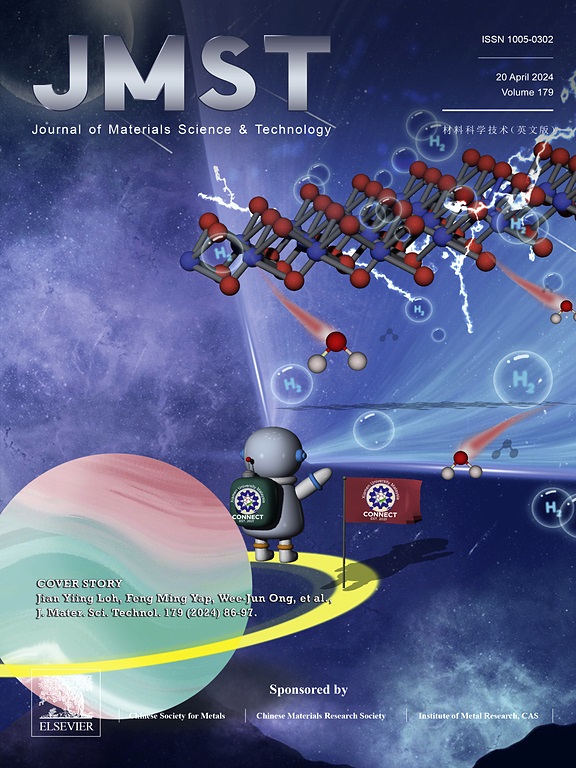Oxidation behavior of CoNiCrAlY bond coatings with single/double layer structure in water vapor environment at 1100°C
IF 11.2
1区 材料科学
Q1 MATERIALS SCIENCE, MULTIDISCIPLINARY
引用次数: 0
Abstract
A comparative study was conducted on the oxidation behavior of four different bond coat structures: single-layer air plasma spraying (APS), single-layer high-velocity oxygen fuel (HVOF), double-layer APS + HVOF, and double-layer HVOF + HVOF in a high-temperature and high-water vapor environment. The oxidation resistance and surface mixed oxide (MO) growth behavior and formation mechanisms of different structures in this environment were analyzed. The results indicate that CoNiCrAlY bond coats with different structures exhibit distinct oxidation behaviors in a high-temperature, high-water vapor environment. The growth of the MO phase is significantly influenced by the bond coat structure, and the high-water vapor environment promotes the nucleation and growth of bulk MO phase, resulting in a multilayer internal structure. Among these, the double-layer HVOF bond coat structure demonstrates superior resistance to water vapor corrosion, with fewer surface MO formations. These findings suggest that proper structural design can enhance the water vapor corrosion resistance of MCrAlY bond coats, providing theoretical foundations and technical support for optimizing their applications in high-temperature, high-water vapor environments.

单/双层结构 CoNiCrAlY 键涂层在 1100°C 水蒸气环境中的氧化行为
本文章由计算机程序翻译,如有差异,请以英文原文为准。
求助全文
约1分钟内获得全文
求助全文
来源期刊

Journal of Materials Science & Technology
工程技术-材料科学:综合
CiteScore
20.00
自引率
11.00%
发文量
995
审稿时长
13 days
期刊介绍:
Journal of Materials Science & Technology strives to promote global collaboration in the field of materials science and technology. It primarily publishes original research papers, invited review articles, letters, research notes, and summaries of scientific achievements. The journal covers a wide range of materials science and technology topics, including metallic materials, inorganic nonmetallic materials, and composite materials.
 求助内容:
求助内容: 应助结果提醒方式:
应助结果提醒方式:


